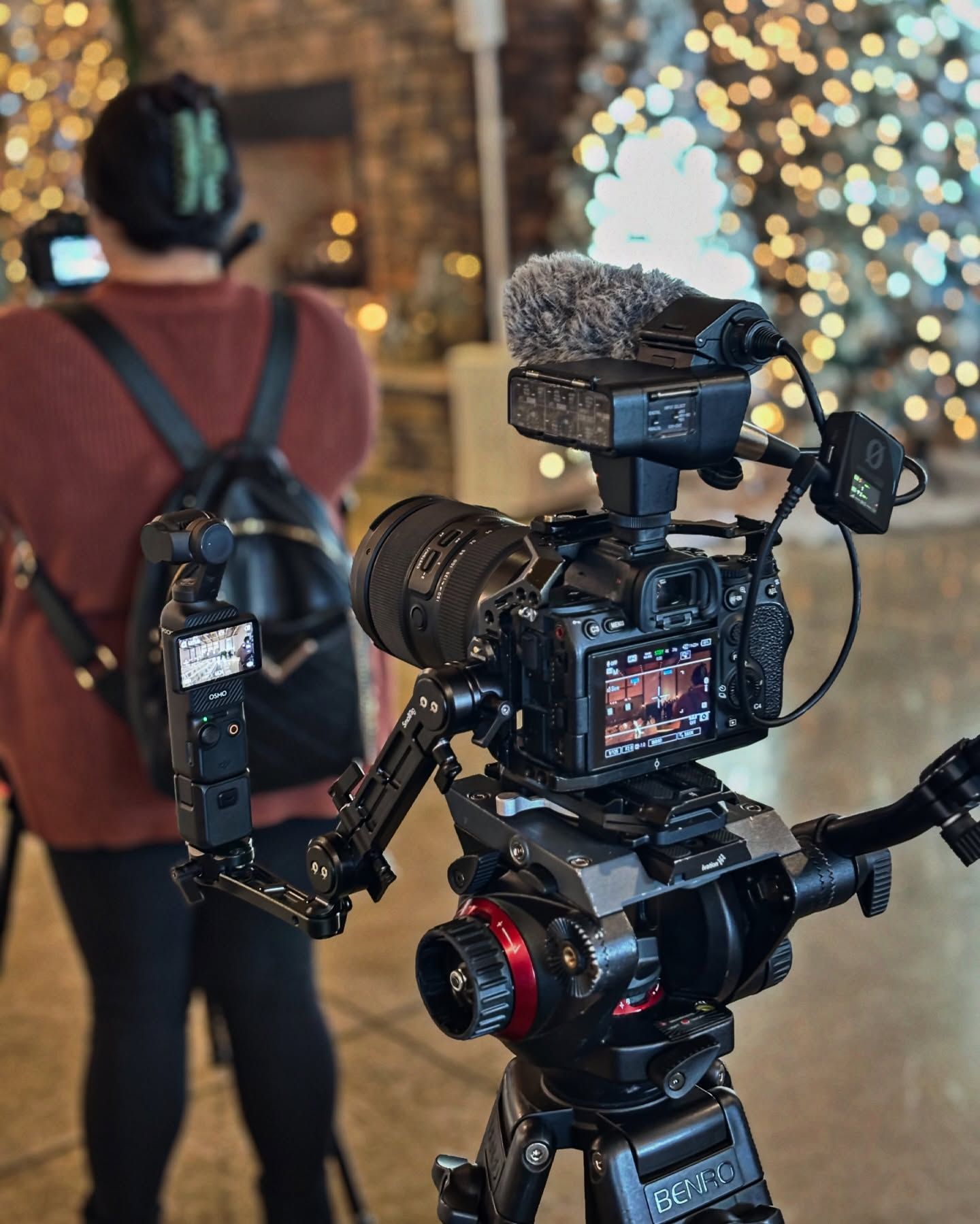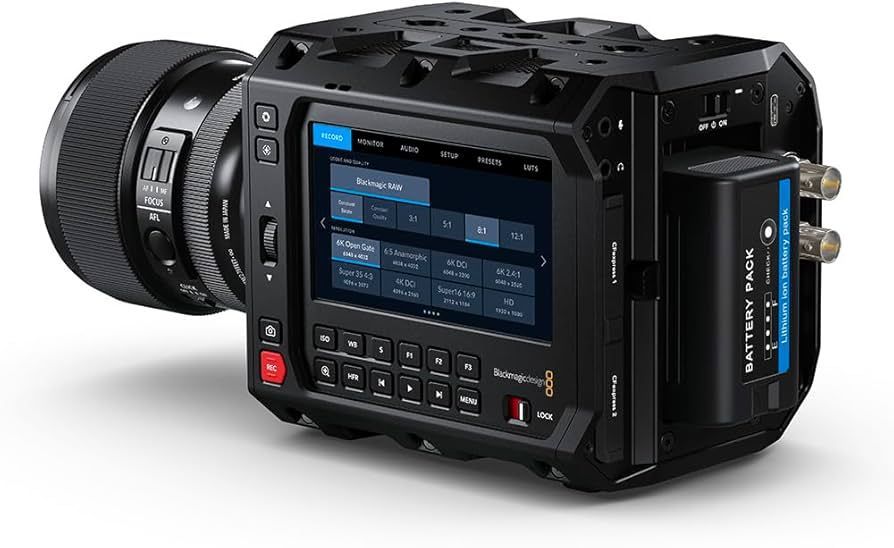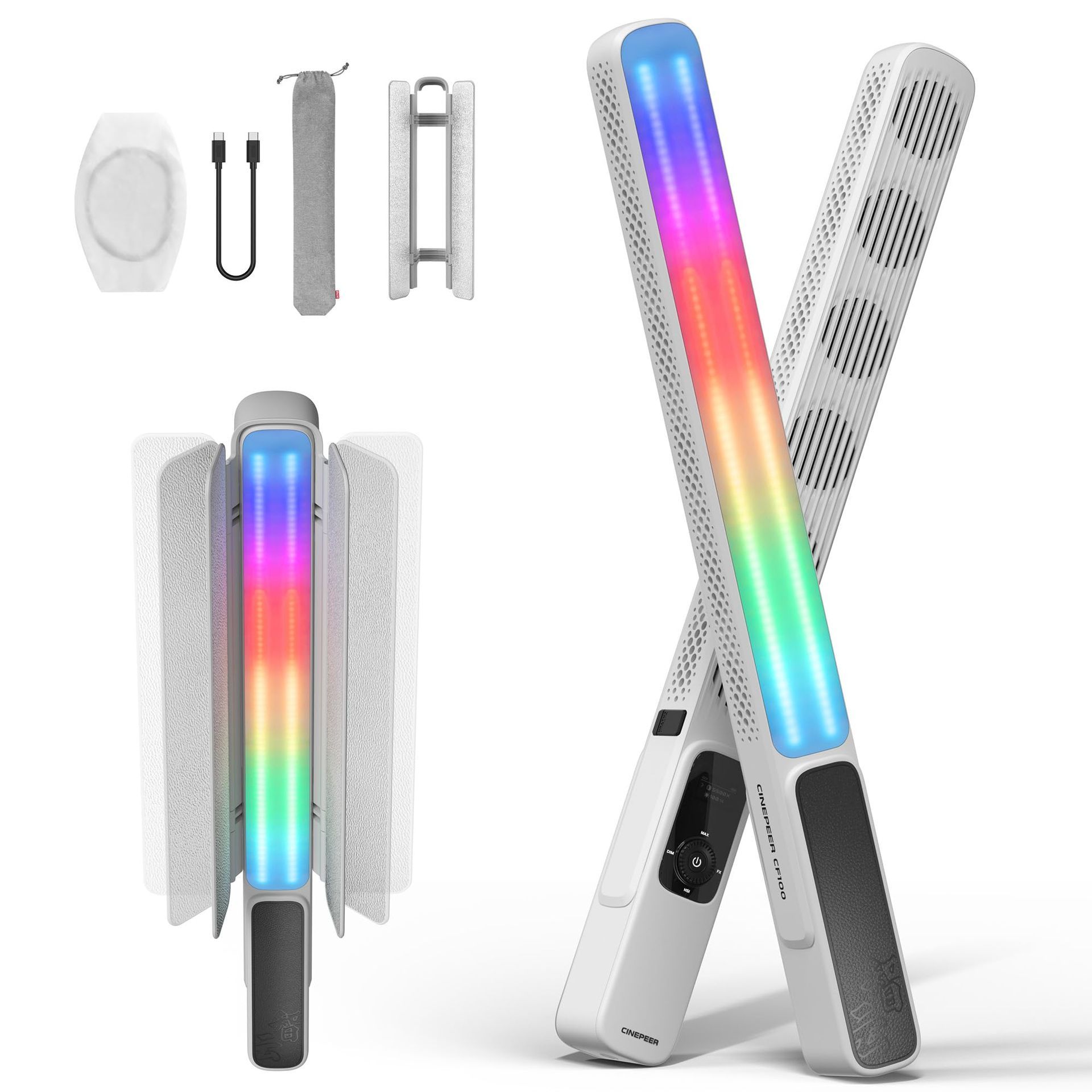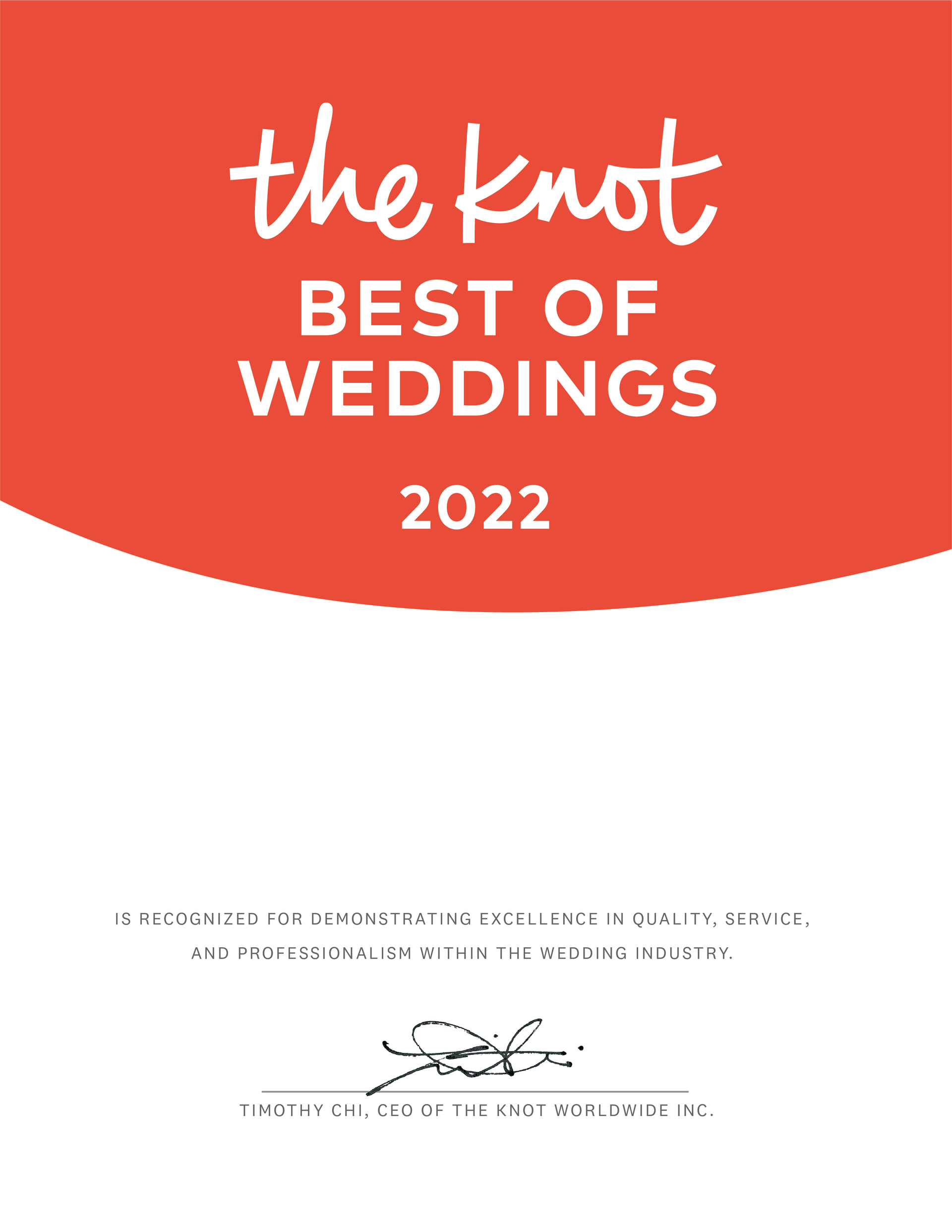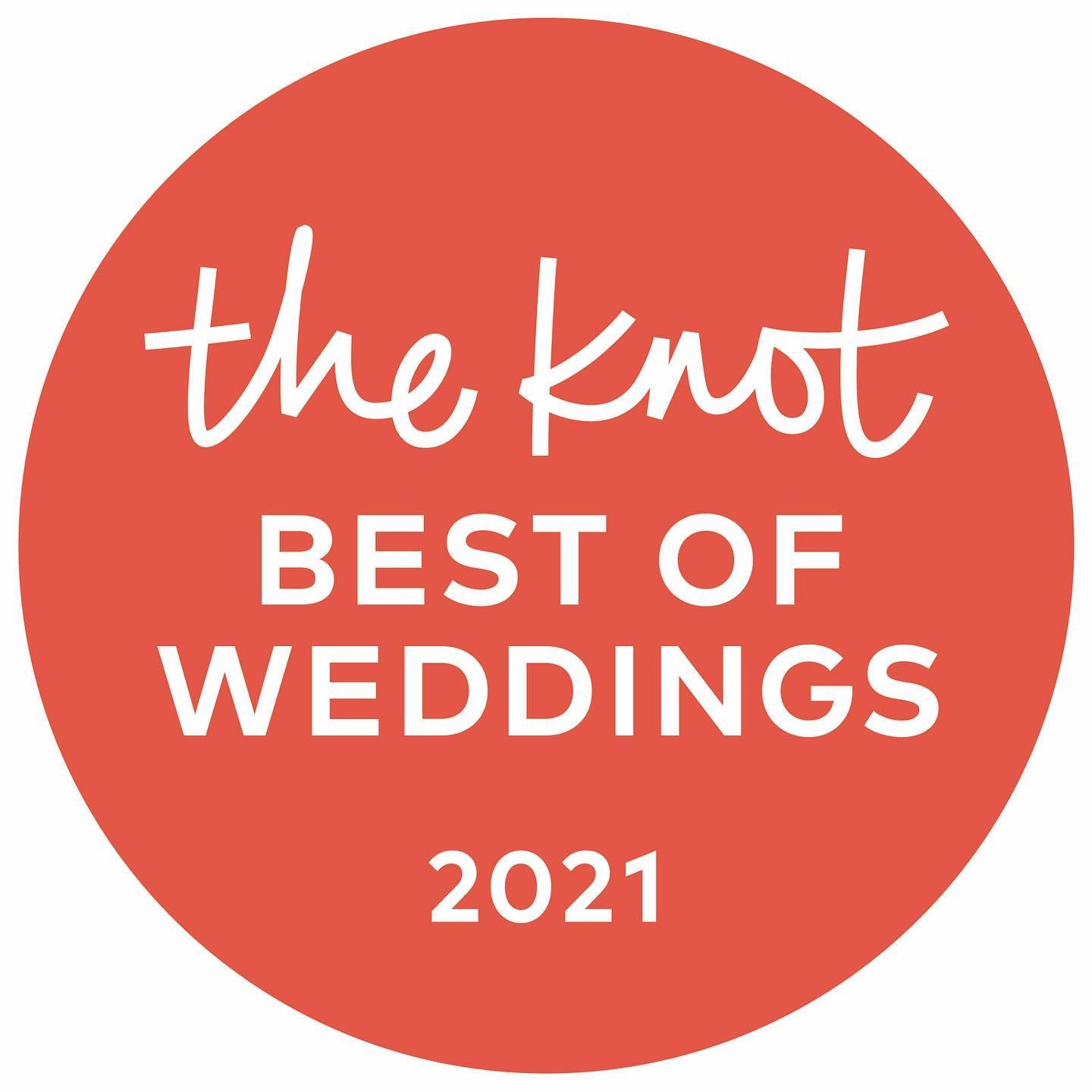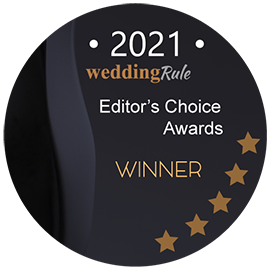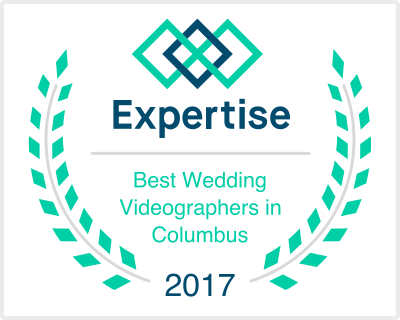17 Proven Promotional Video Ideas That Actually Drive Sales in 2025
A staggering 97% of marketers confirm that video helps increase user understanding of their products or services. In fact, promotional videos have become so powerful that 76% of businesses report increased sales and revenue after implementing video marketing strategies.
Whether you're struggling to capture attention on social media or looking to boost conversion rates, video content is no longer optional. With 90% of consumers finding demo videos helpful and 85% more likely to make purchases after watching them, the right video strategy can transform your sales performance.
That's why we've compiled 17 proven promotional video ideas that actually work in 2025. From product demos to customer testimonials, each strategy is backed by data and designed to drive real results. Let's explore these practical approaches to create videos that not only engage viewers but convert them into customers.
Product Demo Videos That Convert
Product Demo Video Best Practices
Creating high-converting demo videos starts with understanding your target audience's needs and pain points. Keep videos concise, typically between 1-2 minutes, focusing on solving specific customer problems. Structure your content around a relatable customer challenge, introduce your product as the solution, and emphasize the transformation it brings.
Key Elements of High-Converting Demo Videos
A successful demo video combines several crucial components. Begin with a clear value proposition that communicates what your product does and why it matters to viewers. Include engaging visuals and professional audio quality to maintain viewer interest. Additionally, incorporate customer testimonials to build credibility and address common purchase objections.
Demo Video Production Tips
Focus on capturing high-quality footage that clearly demonstrates your product's functionality. Break down complex features into easy-to-understand steps, avoiding technical jargon. For software products, use screen recordings or animated mock-ups to illustrate key features. Meanwhile, physical products benefit from live-action demonstrations showing real-world usage.
Measuring Demo Video Success
Track specific metrics to gage your demo video's effectiveness. Monitor conversion rates, which can increase by 20% to 50% with well-executed demos. Pay attention to view completion rates - successful B2B demo videos typically achieve completion rates above 60% for videos under one minute. Furthermore, analyze click-through rates on calls-to-action and track how viewers progress through your sales funnel.
Remember to include a clear, compelling call-to-action that guides viewers toward the next step, such as starting a trial or requesting more information. Through strategic planning and careful execution, product demo videos serve as powerful tools for showcasing value and driving conversions.
Finding the Right Customers to Feature
Selecting the ideal customers for testimonial videos requires careful consideration. Look for individuals who demonstrate genuine enthusiasm and can articulate their experience clearly. Moreover, focus on customers who have reached the "attribution point" - when they've had sufficient time to evaluate and measure the results of your product or service.
Testimonial Video Structure
An effective testimonial follows a three-part narrative structure. First, the customer outlines their initial challenge. Subsequently, they highlight your product as the solution. Finally, they share specific results and outcomes. For maximum impact, encourage customers to share measurable data points that showcase tangible benefits.
Production Guidelines
Professional production quality reflects directly on your brand image. Ensure proper lighting without harsh shadows and use quality microphones for clear audio capture. Consider these essential elements:
- High-quality visuals that showcase your client's message
- Professional audio that eliminates background noise
- Consistent branding elements throughout the video
- Strategic editing that maintains viewer engagement
Keep testimonial videos between 60-90 seconds to maintain viewer attention. Additionally, include captions since studies show a 40% increase in views for captioned videos. Through careful planning and execution, testimonial videos create emotional connections with viewers while providing concrete evidence of your product's value.
Remember to prioritize authenticity - 86% of consumers consider authenticity crucial when deciding which brands to support. By featuring real customers sharing genuine experiences, promotional videos become compelling tools that resonate with potential buyers and drive sales growth.

Behind-the-scenes promotional videos offer unique glimpses into a brand's inner workings, establishing authentic connections with audiences. These candid moments showcase the dedication behind product creation, fostering trust through transparency.
Showcasing Production Process
Time-lapse videos and day-in-the-life content effectively demonstrate the meticulous steps involved in product creation. For instance, manufacturing businesses can highlight factory operations, showing the scale of production and attention to detail. Through carefully structured narratives, these videos transform complex processes into engaging stories that resonate with viewers.
Highlighting Quality Control
Quality control videos demonstrate commitment to excellence through structured review processes and automated checkpoints. Essential elements include:
- Clear communication channels ensuring accountability
- Structured review workflows with defined checkpoints
- Automated quality control systems reducing human error
Furthermore, centralized platforms enable seamless collaboration, maintaining consistent quality standards across all production stages. This systematic approach ensures every product meets rigorous quality benchmarks before reaching customers.
Building Trust Through Transparency
Transparency in promotional videos creates authentic connections with consumers, particularly as studies indicate customers want more information about product sourcing and creation methods. By revealing production processes, brands demonstrate accountability and build credibility with ethically conscious consumers.
Consider these proven approaches:
- Showcase team members navigating daily operations
- Document quality testing procedures
- Present before-and-after comparisons of production stages
Notably, behind-the-scenes content helps humanize brands by introducing the people responsible for product quality. This approach particularly benefits fast-moving consumer goods manufacturers, allowing audiences to witness the scale of operations firsthand.
Remember to incorporate user-generated content within these videos, as it continues to drive customer engagement and boost brand awareness. Through strategic planning and authentic presentation, behind-the-scenes promotional videos serve as powerful tools for establishing lasting connections with audiences.
Successful promotional videos address specific customer challenges head-on. By identifying and solving real problems, these videos create meaningful connections with viewers, leading to higher engagement and conversions.
Identifying Customer Pain Points
Understanding customer pain points forms the foundation of effective problem-solution videos. These challenges fall into four main categories:
- Process pain points affecting internal procedures
- Financial concerns about costs
- Support-related difficulties
- Product functionality issues
Through qualitative market research and open-ended customer surveys, businesses gain authentic insights into customer struggles. Analyzing support team feedback and resource center usage patterns reveals recurring challenges that need addressing.
Structuring the Solution Narrative
Creating compelling solution narratives requires careful planning and execution. The story structure follows three essential acts:
- A concise setup introducing the challenge
- A focused buildup exploring the main problem
- A clear resolution demonstrating the solution
The narrative must maintain consistent pacing to keep viewers engaged throughout the presentation. Rather than positioning your product as the hero, showcase it as a facilitator helping customers overcome their challenges.
Call-to-Action Optimization
Effective calls-to-action guide viewers toward meaningful engagement. Action-oriented text combined with striking button colors, typically green or orange, drives higher click-through rates. For maximum impact:
- Use personalized, first-person phrasing ("Get my free template" instead of "Get your free template") which increases clicks by 90%
- Create urgency through time-sensitive offers
- Place CTAs strategically following natural reading patterns (left to right, top to bottom)
- Maintain adequate white space around buttons to enhance visibility
Through strategic implementation of these elements, problem-solution promotional videos effectively address customer challenges while guiding viewers toward desired actions. Remember to test different CTA variations to optimize performance and conversion rates.
Comparative promotional videos empower consumers to make informed purchase decisions by presenting side-by-side product evaluations. The Federal Trade Commission actively encourages truthful comparative advertising, recognizing its role in helping consumers make rational choices.
Competitive Analysis Best Practices
A thorough competitive analysis forms the foundation of effective comparison videos. Begin by identifying direct competitors offering similar products and indirect competitors meeting the same customer needs. Focus on objectively measurable attributes that matter most to your target audience. Through split-screen presentations, showcase distinct features while maintaining consistent visuals and branding across all segments.
Feature Comparison Techniques
Structure your comparison around superiority or parity claims based on verifiable data. When highlighting features:
- Present balanced, unbiased evaluations
- Focus on objectively measurable attributes
- Maintain clear visual layouts with proper labeling
- Include pricing comparisons where relevant
For maximum impact, incorporate customer testimonials and real-world usage scenarios that demonstrate practical benefits. Remember that smaller brands often connect better with audiences when challenging larger competitors.
Legal Considerations
The Federal Trade Commission enforces strict guidelines for comparative advertising. Key legal requirements include:
- Claims must be truthful and non-deceptive
- Comparisons must be based on objectively measurable attributes
- Competitors must be clearly identified
- All claims require proper substantiation
Under the Lanham Act, competitors can seek legal action if promotional videos contain false or misleading statements that influence consumer decisions. Therefore, maintain detailed documentation supporting all comparative claims and consider having legal experts review content before publication.
Through strategic implementation of these practices, comparison promotional videos serve as powerful tools for showcasing product advantages while adhering to legal requirements. Accordingly, focus on creating content that educates rather than disparages, as this approach resonates better with viewers and minimizes legal risks.
Tutorial videos emerge as essential tools for businesses seeking to educate customers about their products or services. According to research, viewers prefer instructional content under 20 minutes, with optimal engagement occurring in the 3-6 minute range.
Tutorial Planning and Structure
Effective tutorial planning begins with clear learning objectives and a well-structured script. Start by outlining main points in logical order, ensuring smooth transitions between concepts. For maximum impact:
- Create detailed storyboards mapping visual elements
- Write concise scripts focusing on key takeaways
- Break complex processes into digestible segments
A thorough script helps determine video length and required elements, even for simple screencasts. Additionally, incorporating interactive elements like quizzes increases viewer engagement.
Production Requirements
High-quality production demands attention to both technical and environmental factors. Essential elements include:
Professional audio quality with minimal background noiseProper lighting without harsh shadowsStable internet connection for consistent streaming screen recording software for software demonstrations
For software tutorials, screencasting proves particularly effective, mimicking the actual user experience. Nonetheless, writing scripts beforehand significantly improves video quality, regardless of production method.
Distribution Strategy
Strategic distribution ensures tutorial videos reach intended audiences effectively. Consider these proven approaches:
- Optimize metadata for improved discoverability
- Implement universal content identifiers for cross-platform compatibility
- Create region-specific versions addressing local preferences
Furthermore, posting videos across multiple platforms increases visibility. Through careful planning and execution, tutorial videos serve as valuable assets in promotional strategies, helping businesses showcase product functionality while educating potential customers.
Launching a new product demands more than just a simple announcement. Through strategic promotional videos, brands create anticipation and drive early adoption among target audiences.
Building Pre-Launch Hype
Pre-launch excitement begins with teaser campaigns that offer glimpses into upcoming products. Effective strategies include:
- Behind-the-scenes clips revealing product development
- Countdown videos building anticipation
- Exclusive sneak peeks generating FOMO (Fear of Missing Out)
Through carefully timed content releases, brands maintain audience interest until launch day. Drip-feeding information creates sustained engagement, ultimately leading to stronger launch performance.
Launch Video Elements
Successful launch videos combine several key components to maximize impact. Essential elements include:
- Compelling storytelling that resonates with target audiences
- Clear demonstration of product features and benefits
- Interactive elements encouraging viewer participation
- Strong emotional connections through authentic narratives
Incorporating AI-driven editing and AR/VR experiences elevates engagement levels even further. These technological advancements transform passive viewing into immersive experiences that drive deeper connections with potential customers.
Multi-Platform Distribution
Strategic distribution ensures maximum reach across diverse audience segments. Consider these proven approaches:
First, optimize content for each platform's specific requirements and user behaviors. Then, implement a consistent publishing schedule across channels to maintain steady engagement. Lastly, utilize platform-specific features like SCTE-35 ad insertion for broadcast channels.
Through careful planning and execution, product launch videos serve as powerful tools for generating buzz and driving early adoption. By incorporating advanced technologies and maintaining authentic connections, brands create memorable launches that resonate with target audiences.
Case Study Videos
Case study videos serve as persuasive tools that showcase real-world success stories, with viewers retaining 95% of messages through video compared to just 10% through text. These promotional videos combine authentic customer experiences with measurable outcomes to build credibility and drive conversions.
Selecting Compelling Cases
Identifying the right customers for case study videos requires strategic consideration. Look for clients who achieved extraordinary results and align with your target audience's profile. Essential selection criteria include:
- Measurable outcomes demonstrating significant impact
- Enthusiasm for sharing their experience
- Articulate communication skills
- Long-term relationship showcasing sustained value
Storytelling Framework
Effective case studies follow the Challenge-Solution-Impact format, creating compelling narratives that resonate with viewers. The storytelling structure includes:
- Introducing the customer's initial situation
- Highlighting specific challenges faced
- Demonstrating how your solution addressed problems
- Showcasing tangible results and transformation
Through this framework, case study videos maintain viewer engagement throughout the presentation. Certainly, incorporating emotional elements helps establish deeper connections, as 95% of decisions are influenced by subconscious emotions.
ROI Presentation
Presenting return on investment requires careful attention to both qualitative and quantitative metrics. For instance, HubSpot reported that just 10 case study videos influenced over $1.92 million in new ARR within 12 months. Similarly, Rankings.io generated $180,000 in one month after implementing strategic case studies.
To maximize impact, focus on:
- Specific metrics showcasing success
- Visual presentation of data through graphs
- Before-and-after comparisons
- Industry-specific benchmarks
Undoubtedly, incorporating professional production elements enhances credibility. Consider quiet locations for interviews, proper lighting, and high-quality audio capture to ensure your case study videos reflect positively on your brand.
Dynamic promotional videos featuring time-sensitive offers tap into powerful psychological triggers that drive quick purchase decisions. Flash sales and limited-time promotions generate 385% more return purchases on average, making them essential tools for boosting conversions.
Creating Urgency
Time-bound promotional videos harness FOMO (Fear of Missing Out) to motivate viewer action. Through strategic visual elements like countdown timers, these videos increase conversion rates by 41%. Essential components include:
- Clear value propositions highlighting exclusive benefits
- Visual countdown elements emphasizing scarcity
- Compelling calls-to-action driving immediate response
Offer Structure
Successful limited-time promotional videos combine several key elements to maximize impact. Research shows dollar discounts perform better for higher-priced items. Consider these proven approaches:
- Bundle complementary products or services
- Include bonus items or exclusive access
- Offer tiered pricing options
- Add free shipping incentives
Studies indicate email promotion of limited-time offers drives 138% higher spending compared to social media channels. Through strategic offer structuring, businesses create compelling reasons for immediate action.
Campaign Timing
Timing plays a crucial role in limited-time promotional video success. Research from the University of East Anglia reveals viewers need at least 12 seconds to process time-sensitive offers effectively. For optimal results:
- Align campaigns with seasonal trends or industry events
- Schedule releases during peak engagement periods
- Plan multi-channel distribution strategies
- Set realistic timeframes for viewer decision-making
Dynamic marketing videos enable automatic updates across multiple platforms, ensuring consistent messaging throughout the campaign. Above all, maintain authenticity in promotional timing - misleading "limited-time" claims that run continuously damage brand credibility.
Through strategic implementation of these elements, limited-time offer videos create compelling reasons for immediate action while building long-term customer relationships. Remember to emphasize genuine value alongside urgency, as 86% of consumers prioritize authenticity when choosing brands.
Incorporating expert interviews in promotional videos establishes brand credibility and delivers authentic insights to viewers. Studies indicate expert interviews boost brand awareness and credibility, especially when featuring niche-specific professionals who share relevant data and expertise.
Choosing the Right Experts
Selecting appropriate experts requires thorough evaluation of their background and communication abilities. Essential criteria include:
- Deep industry knowledge and proven track record
- Clear articulation skills for complex topics
- Alignment with brand values and messaging
- Active engagement in current industry developments
Primarily, focus on experts who can break down technical concepts into digestible pieces while maintaining authenticity throughout the conversation.
Interview Format Options
Different interview styles yield varying levels of engagement. Consider these proven formats:
- Off-camera interviews create intimate atmospheres where subjects openly share experiences
- Direct-address interviews enable powerful connections through eye contact
- Action-based interviews capture experts demonstrating processes
- Cinematic approaches combine narration with visual elements
Specifically, the interview environment influences overall video quality. Quiet locations with proper lighting ensure professional results.
Content Distribution
Strategic content distribution maximizes expert interview reach across multiple channels. Effective approaches include:
- Optimizing metadata for improved discoverability
- Implementing universal content identifiers
- Creating region-specific versions
- Utilizing email campaigns, which drive 138% higher engagement
Notably, repurposing interview content into different formats ensures maximum visibility. Transform long-form interviews into shorter clips for social media, blog posts, and email newsletters. Through careful planning and execution, expert interview videos serve as valuable assets that establish thought leadership while providing actionable insights to target audiences.
Feature spotlight promotional videos transform complex product capabilities into compelling visual stories. Studies reveal that viewers retain 95% of information through video format, making these presentations essential for showcasing product innovations.
Feature Selection Strategy
Identifying key features requires careful analysis of user preferences and market demands. Through data-driven insights, businesses prioritize functionalities that resonate most with target audiences. Essential considerations include:
- Alignment with customer pain points
- Competitive differentiation opportunities
- Measurable impact on user experience
Visual Presentation Techniques
Effective visual storytelling demands meticulous attention to production quality. Professional lighting eliminates harsh shadows, ensuring clear visibility of product details. Consider these proven approaches:
- Animate key processes for complex features
- Integrate familiar software demonstrations
- Craft clear narrative arcs showcasing value
- Implement high-quality motion graphics
Through strategic implementation of these techniques, businesses achieve 32% higher engagement rates.
Benefit Communication
Successful feature presentations transcend technical specifications, focusing on practical advantages. Research indicates that 85% of consumers make purchase decisions based on clear benefit demonstrations. Essential elements include:
- Direct value proposition statements
- Real-world application scenarios
- Quantifiable performance improvements
- User experience enhancements
Incorporating customer-centric narratives proves particularly effective, as 86% of viewers prioritize authenticity when evaluating products. Through careful planning and execution, feature spotlight videos serve as powerful tools for educating audiences and driving conversions.
Remember to maintain consistent pacing throughout the presentation, as studies show optimal engagement occurs within specific timeframes. By focusing on clear communication and impactful visuals, these promotional videos effectively showcase product innovations while building genuine brand enthusiasm.
User-generated content videos amplify brand authenticity, as 84% of millennials report that UGC influences their purchasing decisions. Through strategic collection and curation of customer-created videos, businesses harness powerful promotional tools that resonate with target audiences.
UGC Collection Methods
Gathering authentic user content requires systematic approaches. Email campaigns prove particularly effective, with 60-90% of reviews originating from direct requests. Successful collection strategies include:
- Post-purchase feedback requests offering reward points or discounts
- Social media contests with branded hashtags
- QR codes placed strategically in stores and marketing materials
Automated software tools streamline the collection process, enabling large-scale UGC aggregation while maintaining quality standards.
Content Curation
Effective curation demands careful evaluation of submitted content. First, establish clear guidelines outlining quality standards and brand alignment. Through dedicated platforms, businesses can efficiently:
- Monitor and collect content across various channels
- Review submissions for quality and relevance
- Organize content by themes or campaigns
- Track performance metrics
Proper attribution remains essential - always credit original creators when sharing their content.
Legal Requirements
Understanding legal obligations protects businesses utilizing UGC. The Federal Trade Commission enforces strict guidelines, including a USD 2.50 million fine for deceptive use of affiliate content without proper disclosure. Essential compliance measures include:
- Obtaining explicit consent before reusing customer content
- Implementing opt-in mechanisms for marketing usage
- Providing clear terms of service near submission forms
- Honoring takedown requests promptly
Intellectual property laws protect user-created content, necessitating proper licensing agreements before commercial use. Additionally, privacy regulations like GDPR require specific consent for processing user content beyond initial terms of service.
Through strategic implementation of these practices, businesses transform customer-generated videos into powerful promotional assets while maintaining legal compliance and building consumer trust.
Live promotional videos create powerful connections with audiences through real-time interaction and immediate engagement. Research indicates that live demos increase sales by 20% to 50% when executed effectively.
Live Demo Planning
Thorough preparation ensures smooth execution of live product demonstrations. Essential planning elements encompass:
- Qualifying prospects based on their position in the buyer's journey
- Confirming decision-maker presence among attendees
- Understanding specific pain points and goals
- Preparing tested, official product versions
Technical Requirements
Professional live demonstrations demand meticulous attention to technical details. Prior to starting, verify:
- Stable internet connectivity for consistent streaming
- Professional-grade audio equipment
- Proper lighting setup
- Backup systems for critical components
Screen annotations and interactive features enhance viewer understanding, enabling real-time highlighting of key features. Through proper technical preparation, businesses minimize potential disruptions that could break presentation flow.
Audience Engagement
Interactive elements transform passive viewers into active participants. Successful engagement strategies incorporate:
- Real-time question handling
- Live polls and surveys
- Interactive challenges
- Downloadable resources
Moving Q&A sessions to the beginning helps establish dialog and address concerns early. Additionally, implementing engagement features like comments and reaction buttons enables two-way conversations throughout the presentation.
For maximum impact, schedule interactive elements strategically during the demonstration. Through careful timing of engagement opportunities, businesses maintain audience interest while showcasing product capabilities effectively.
Remember to maintain control over the dialog flow, deciding appropriate moments for discussing pricing or technical specifications. By combining professional production quality with strategic audience interaction, live product demonstration videos create memorable experiences that drive conversions.
FAQ promotional videos transform customer support by providing quick, visual answers to common questions. Studies reveal that 90% of customers expect instant responses when reaching out to companies, making these videos invaluable assets for businesses.
Question Selection Process
Identifying relevant questions demands systematic research through multiple channels. Support teams offer firsthand insights into recurring customer inquiries, although customer satisfaction surveys provide additional perspectives. Through analyzing available data and resource center usage patterns, businesses pinpoint questions that:
- Impact purchase decisions
- Address post-purchase concerns
- Clarify technical specifications
- Resolve common pain points
Answer Format
Effective FAQ videos maintain viewer engagement through concise, structured responses. The ideal length ranges between 1-2 minutes, ensuring thorough explanations without losing audience attention. Essential formatting elements include:
- Clear, straightforward explanations
- Visual demonstrations where applicable
- Professional audio quality
- Strategic use of graphics
Incorporating visual elements and animations increases understanding, making complex concepts more memorable. Through careful scripting and production planning, businesses deliver consistent, accurate information across all FAQ videos.
SEO Optimization
Strategic optimization ensures FAQ videos reach intended audiences effectively. Google prioritizes video content that follows specific technical guidelines. Key optimization elements include:
- Structured data implementation
- Accurate content timestamps
- Comprehensive video descriptions
- Strategic keyword placement
Additionally, uploading FAQ videos to YouTube, the second-largest search engine, doubles visibility opportunities. Through proper metadata optimization and strategic distribution across multiple platforms, businesses maximize their promotional videos' reach and effectiveness.
Remember to monitor viewer engagement metrics and gather feedback for continuous improvement. By analyzing watch time, drop-off points, and viewer comments, businesses refine their FAQ video strategy to maintain relevance and value over time.
Social proof promotional videos tap into consumer psychology, with studies showing that 95% of viewers trust video testimonials for making purchase decisions. These authentic endorsements create powerful connections between brands and potential customers.
Types of Social Proof
Effective social proof videos incorporate multiple formats to build credibility. Expert endorsements establish authority through industry professionals sharing insights. Customer testimonials showcase real experiences, as 77% of users confirm video testimonials influence their purchasing decisions. Additionally, certification videos highlight awards and recognition from reputable organizations.
Content Collection
Gathering compelling social proof requires systematic approaches. Email campaigns generate superior results, driving 138% higher engagement rates. Successful collection strategies focus on:
- Post-purchase feedback requests with incentives
- Direct outreach to satisfied customers
- Automated software tools for large-scale aggregation
- Strategic timing of collection efforts
Presentation Formats
Professional presentation transforms raw social proof into engaging promotional videos. Quick quotes paired with visuals boost credibility instantly. Video testimonials typically achieve optimal engagement between 45-60 seconds when explaining specific features. For comprehensive case studies, two-minute formats effectively communicate value propositions.
Through strategic implementation, businesses leverage various presentation styles:
- Before-and-after demonstrations
- Real-time activity notifications
- Social media integration
- Trust badge displays
Consequently, maintaining authenticity remains crucial, as 86% of consumers consider genuineness vital when choosing brands. By incorporating multiple social proof elements, promotional videos create compelling narratives that resonate with target audiences. Remember to optimize metadata for improved discoverability across platforms. Through careful planning and execution, social proof videos serve as powerful tools for building trust and driving conversions.
Product Update Videos
Update Communication Strategy
Effective product updates begin with value-focused messaging that addresses specific user needs. First, identify the problems solved and benefits added to enhance user experience. Through strategic communication planning:
- Define clear objectives for each update
- Establish consistent release schedules
- Select appropriate distribution channels
- Create targeted messaging for different user segments
Visual Presentation
Professional video production transforms technical updates into engaging content. Screen recording tools enable seamless creation of video tutorials, simplifying complex functionalities. Essential visual elements include:
- Step-by-step demonstrations
- Interactive walkthroughs
- Visual comparisons highlighting improvements
- Progress indicators showing implementation stages
Incorporating motion graphics and animations increases viewer retention by 138%. Additionally, maintaining consistent branding throughout promotional videos strengthens recognition and trust.
Customer Education
Well-structured educational content empowers users to maximize new features. Research indicates that video tutorials achieve 60-90% higher engagement rates when incorporating practical examples. Through comprehensive learning resources:
- Provide contextual guidance for feature adoption
- Demonstrate real-world applications
- Offer supplementary documentation
- Include interactive elements for hands-on learning
Utilizing video hosting platforms enables tracking of viewer engagement metrics. These insights help optimize future updates based on user interaction patterns. Remember to maintain clear, concise explanations focused on practical benefits rather than technical specifications.
Through strategic implementation of these elements, product update promotional videos serve as powerful tools for driving feature adoption while maintaining strong customer relationships. Proper timing and distribution across multiple channels ensures maximum reach and impact.
Measuring promotional video success requires systematic analysis of key performance indicators and implementation strategies. Through careful examination of successful campaigns, businesses gain valuable insights for future content creation.
Case Selection Criteria
Selecting exemplary cases demands thorough evaluation of multiple factors. McKinsey's Award Creativity Score reveals that 67% of companies ranking in the top quartile achieve above-average organic revenue growth. Essential selection elements include:
- Measurable business impact across multiple channels
- Clear alignment with strategic objectives
- Innovation in storytelling approaches
- Sustainable production practices
Success Metrics
Effective measurement combines quantitative and qualitative indicators. Video completion rates exceeding 95% indicate strong audience engagement. Key performance indicators encompass:
- View duration and retention rates
- Social sharing metrics
- Click-through rates on calls-to-action
- Conversion tracking across platforms
Studies demonstrate that businesses utilizing video marketing grow revenue 49% faster than non-video users. Remarkably, promotional videos featuring customer testimonials drive an 88% redemption rate for offered rewards.
Implementation Lessons
Experience reveals crucial insights for successful promotional video campaigns. First, creating content barely moves the needle without strategic promotion. Essential implementation strategies include:
- Optimizing metadata for enhanced discoverability
- Developing multi-language versions for global reach
- Allocating equal time to creation and promotion
- Implementing comprehensive tracking systems
Research confirms that 74% of marketers report better ROI from video compared to static images. Interestingly, promotional videos placed on product pages increase purchase likelihood by 80%. Through strategic implementation of these insights, businesses transform promotional videos into powerful conversion tools.
FAQs
Q1. What are some examples of successful promotional videos?
Some highly effective promotional video campaigns include Nike's "Dream Further", Apple's "Welcome Home", Coca-Cola's "Share a Coke", and Dove's "Real Beauty". These videos successfully increased brand awareness and customer engagement through compelling storytelling and emotional connections.
Q2. What key elements should be included in a promotional video?
Essential elements for promotional videos include clear communication of vital information (e.g. discount codes, event dates, sale deadlines), engaging visuals, professional audio quality, a compelling call-to-action, and authentic storytelling that resonates with the target audience.
Q3. What are some good ideas for creating how-to videos?
Effective how-to video ideas include teaching specific tasks, demonstrating life hacks, interviewing experts, producing step-by-step guides, creating animated tutorials, showcasing user experiences, and highlighting various product uses. The key is to provide clear, valuable information in an engaging format.
Q4. How do promotional videos impact sales?
Promotional videos significantly impact sales, with businesses using video marketing growing revenue 49% faster than non-video users. Additionally, 73% of consumers report being influenced by a brand's social media presence when making purchasing decisions, making compelling video content a powerful sales driver.
Q5. What is the optimal length for different types of promotional videos?
The ideal length varies depending on the video type and platform. Product demos are most effective at 1-2 minutes, customer testimonials at 60-90 seconds, and how-to tutorials between 3-6 minutes. For social media, shorter videos (15-60 seconds) often perform best. The key is to convey your message concisely while maintaining viewer engagement.
